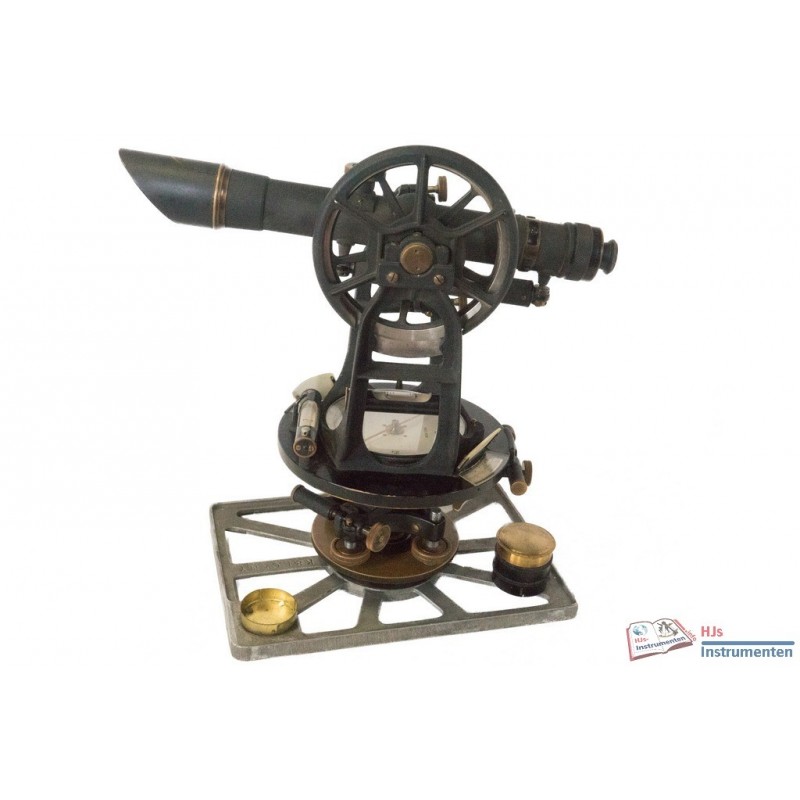











1940's 'classic' geodetic transit by Keuffel and Esser.
Product details: Keuffel and Esser transit instrument | Keuffel and Esser | Boussole theodolite | Survey | Material: Brass
The transit is essentially a theodolite. The name difference (transit vs theodolite) has originated across the Atlantic ocean with American surveyors calling this type of instrument the Transit or Transit theodolite whereas the European instrument has always been called the theodolite. For a long time the term 'theodolite' meant in the US an instrument of European origin. The 'Transit' as it is known in the US was originally developed in Europe as well (mainly the UK) but with the introduction of the Swiss instruments from Wild and Kern in the 1920's and 1930's, the European surveying community left this model en-masse for the more accurate and more compact instrument.
This transit is from 1941/42 but essentially looks the same as the instrument from a 1900's catalogue. If there are any improvements, they cannot be seen on the outside. This actual instrument was produced until after WWII showing the conservatism of (American?) surveyors. The Transit has a few (small) advantages over its European cousin. First it almost invariably has a magnetic compass built in, making it a Boussole theodolite as standard. The compass can be read to half degrees directly and estimated to about a quarter of a degree. It can be adjusted for local variation making it point to true north.
Second they have a telescope level as standard allowing them to do levelling. And finally it is direct reading, meaning that the scales can be read directly using a magnifier. The scales have a vernier; the vertical for 30' (1' intervals) and the horizontal for 20' (30" intervals). The vertical scale has a single vernier, the horizontal has two verniers allowing opposite ends of the scale to be read (and averaged) for a more accurate result. The horizontal scale can be estimated to about 10 - 15" making just about as accurate as the much smaller Wild Heerbrugg T0 Boussole.
More information / other collections:
Data sheet
You might also like